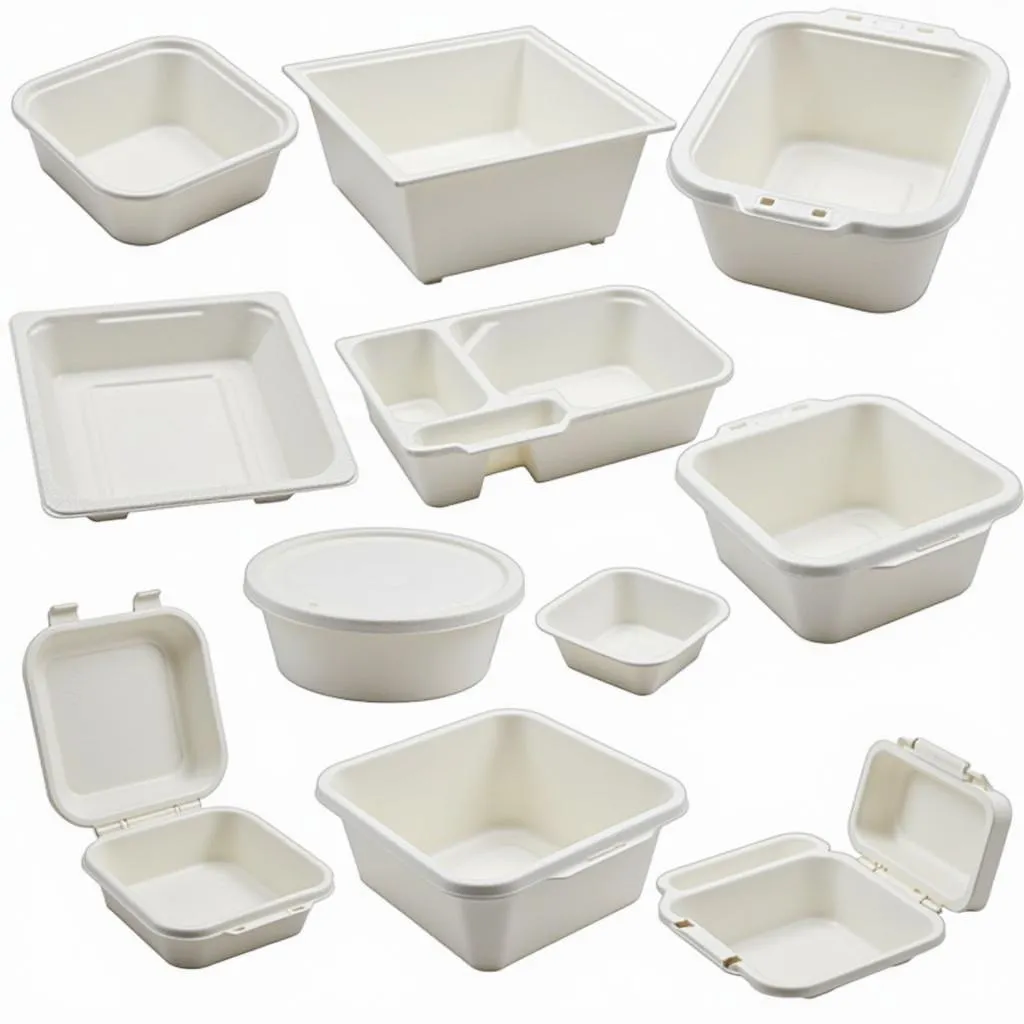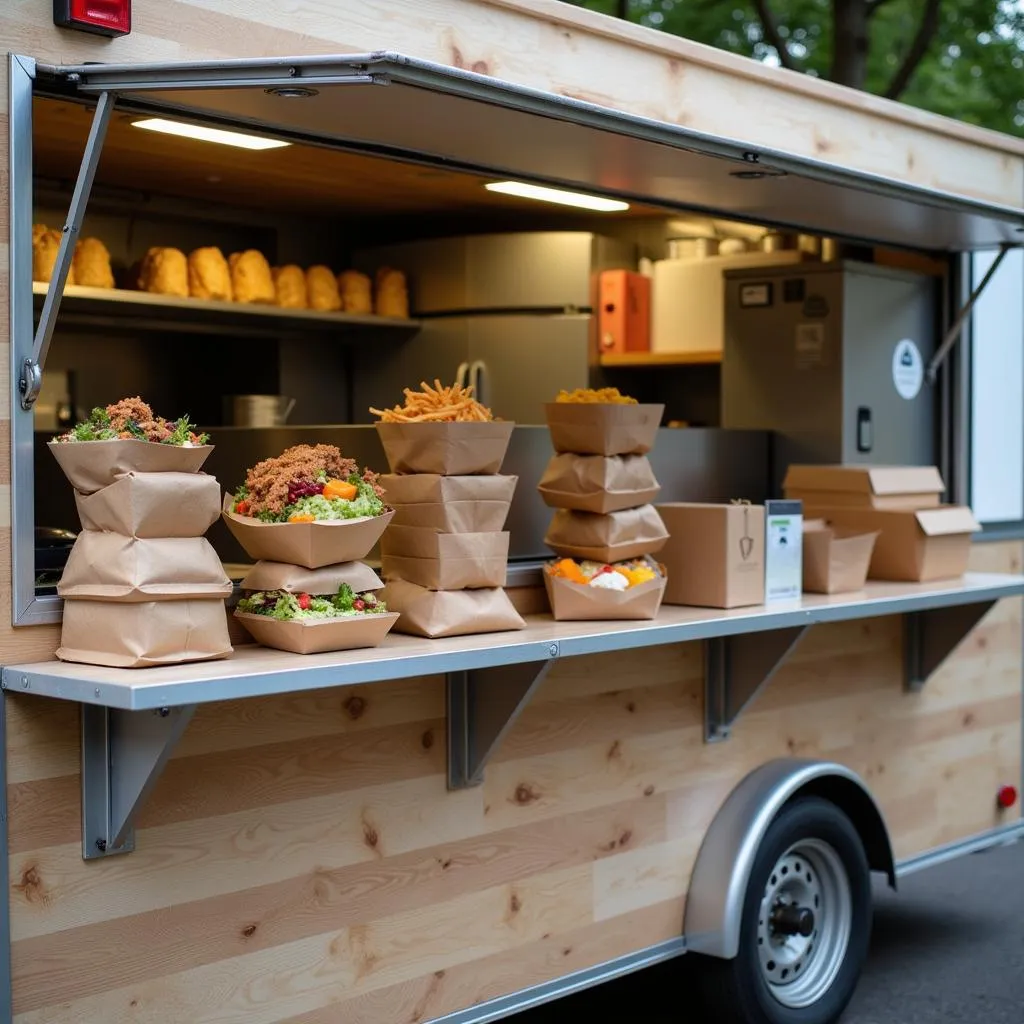Foam Food Containers are a staple in the food industry, known for their insulating properties and cost-effectiveness. But are they the right choice for your business? In this comprehensive guide, we’ll delve into the world of foam food containers, exploring their benefits, drawbacks, and everything in between.
Understanding Foam Food Containers
Foam food containers, often referred to as Styrofoam containers, are made from expanded polystyrene (EPS) foam. This lightweight and durable material is prized for its ability to maintain food temperatures, making it a popular choice for takeout, delivery, and catering services.
 Assortment of Foam Food Containers
Assortment of Foam Food Containers
Benefits of Using Foam Food Containers
Foam food containers offer several advantages that have cemented their place in the food industry:
- Excellent Insulation: Foam excels at maintaining food temperatures, keeping hot food hot and cold food cold for extended periods.
- Cost-Effective: Foam containers are generally more affordable than their plastic and paper counterparts, making them an economical choice for businesses.
- Lightweight and Durable: Their lightweight nature makes them easy to handle and transport, while their durability ensures they can withstand the rigors of food service.
Drawbacks of Foam Food Containers
Despite their advantages, foam food containers also have some drawbacks:
- Environmental Concerns: Foam is not biodegradable and can take hundreds of years to decompose in landfills.
- Potential Health Risks: There have been concerns about styrene, a chemical used in EPS production, leaching into food, particularly at high temperatures.
- Not Easily Recyclable: While some recycling programs accept foam containers, they often require specific processing, making them less likely to be recycled compared to other materials.
 Sustainable Food Packaging Options
Sustainable Food Packaging Options
Exploring Alternatives to Foam Containers
With growing environmental concerns, many businesses are seeking eco-friendly alternatives to foam food containers:
- Paper Food Containers: Biodegradable and compostable, paper containers are a popular choice for their sustainability. They come in a range of sizes and shapes, making them suitable for various food items.
- Bagasse Food Containers: Made from sugarcane pulp, bagasse containers are another sustainable option. They are sturdy, microwave-safe, and compostable.
- PLA-Lined Paper Containers: These containers combine the insulation properties of plastic with the sustainability of paper. A thin PLA lining provides a moisture barrier while maintaining compostability.
Making Informed Choices: Factors to Consider
When choosing food containers for your business, consider these key factors:
- Food Type: The type of food you’re serving will influence your container choice. For hot, greasy foods, consider containers with grease-resistant linings.
- Environmental Impact: Opt for biodegradable or compostable options to minimize your environmental footprint.
- Cost: Balance cost-effectiveness with sustainability and performance when making your selection.
 Food Truck Serving Food in Sustainable Packaging
Food Truck Serving Food in Sustainable Packaging
Conclusion
Foam food containers have long been a staple in the food industry, offering insulation and affordability. However, with increasing environmental awareness, businesses are exploring sustainable alternatives. By carefully considering the factors discussed above, you can choose the best food containers for your business, balancing functionality, cost, and environmental responsibility.
FAQs
1. Are foam food containers microwave-safe?
No, most foam food containers are not microwave-safe. Microwaving foam can release harmful chemicals into your food and potentially damage the container itself.
2. What are the best eco-friendly alternatives to foam food containers?
Excellent eco-friendly options include paper, bagasse (sugarcane pulp), and PLA-lined paper containers, all of which are biodegradable or compostable.
3. Can foam food containers be recycled?
While some recycling programs accept foam containers, they often require specific processing. Check with your local recycling guidelines for disposal instructions.
4. Are there health concerns associated with using foam food containers?
Some studies suggest that styrene, a chemical in EPS foam, may leach into food, particularly at high temperatures. Using alternatives minimizes potential risks.
5. Where can I purchase sustainable food containers for my business?
Numerous online retailers and restaurant supply stores offer a wide selection of eco-friendly food containers, including paper, bagasse, and PLA-lined options.
For further assistance in choosing the perfect food packaging solution for your business, contact us at Phone Number: 02437655121, Email: minacones@gmail.com or visit us at 3PGH+8R9, ĐT70A, thôn Trung, Bắc Từ Liêm, Hà Nội, Việt Nam. Our dedicated customer support team is available 24/7 to address your inquiries.